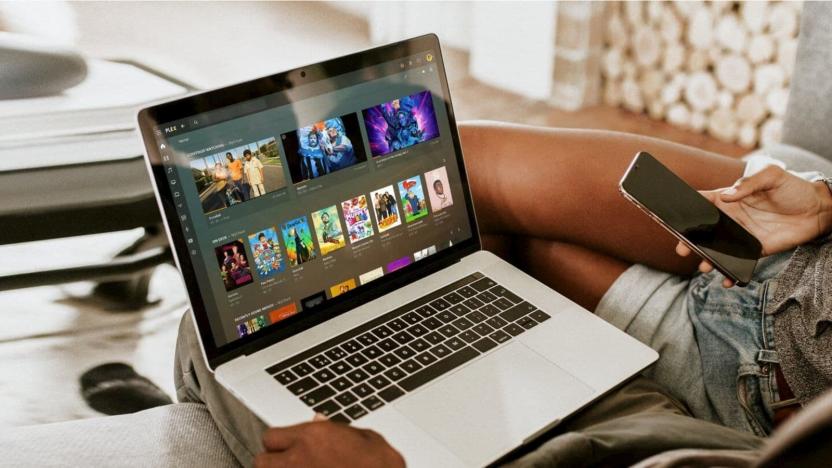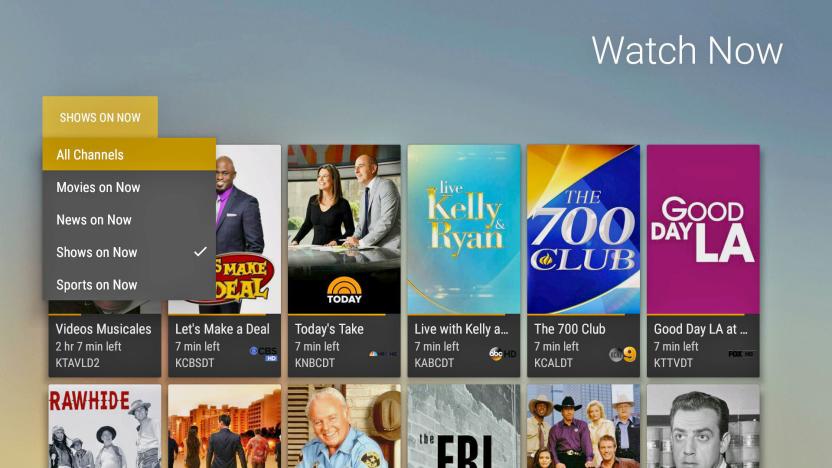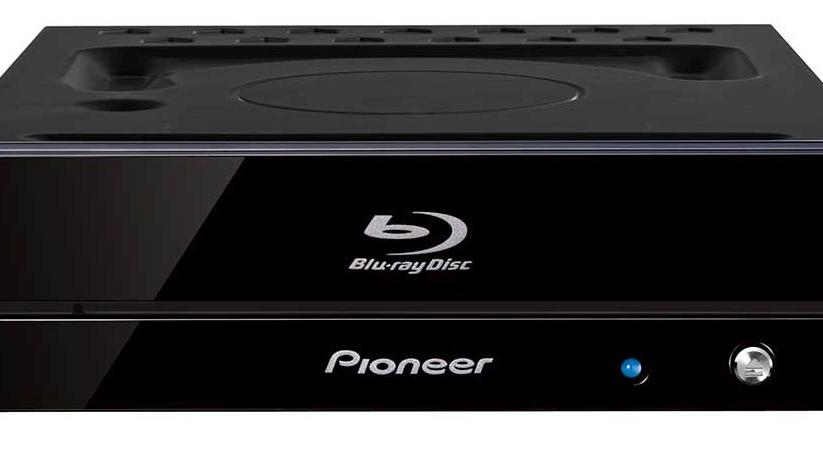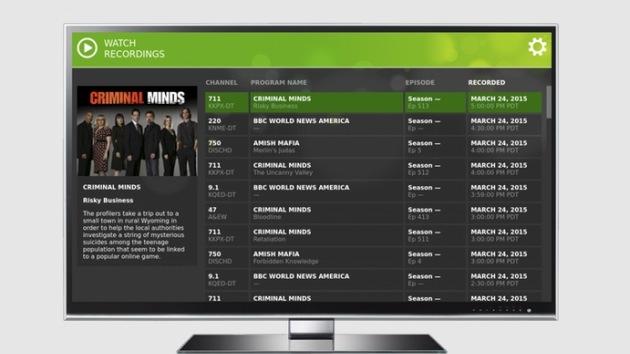htpc
Latest

Plex’s new desktop app packs a fresh look, streamlined downloads
Plex has a brand new app for Windows and Mac that offers a streamlined way to download the things you want to watch and listen to offline. The feature was previously called Sync, but it's now called Downloads -- a much clearer term. Your downloads should start faster and with a single click, while Plex'll offer clearer feedback on your download progress. However, the server owner still needs a Plex Pass to enable offline media access. This simpler, more reliable mechanism (as Plex describes it) should make its way to the service's mobile apps in the future.
Kris Holt08.15.2019
Plex Live TV and DVR launches for subscribers
Last fall Plex started beta testing a DVR feature for its popular media server setup, and now it's making the next big step by offering live TV and DVR for all Plex Pass subscribers. They will need to bring their own tuner(s), connected to a TV antenna or cable jack, but Plex will do the rest, providing the necessary guide data as a part of the Pass subscription if you live somewhere with DVB-T or ATSC (North America) broadcasts. . As of today, it not only supports more kinds of tuners, it's also ready to stream live TV to iOS or Android TV, with Android mobile devices and Apple TV next up.
Richard Lawler06.01.2017
The first Ultra HD Blu-ray PC drive ships next month
More and more, we're getting our movies and TV via streaming services instead of on disc. But a certain DIY crowd still appreciates support for physical media piped through a home theater PC, and that's the group the first Ultra HD Blu-ray drive is made for. Pioneer Japan announced two disc drives, the BDR-S11J-BK and the BDR-S11J-X that it will release in late February, ready to read the triple-layer 4K-ready discs.
Richard Lawler01.25.2017
Plex adds a DVR feature for over-the-air and CableCARD tuners
Ask any media hound about the best way to stream your your video files, and they'll probably direct you to Plex. Now, the streaming software is getting even more useful with a long-awaited feature: DVR support. Just plug an HDHomeRun tuner (with antenna) into your PC, set it up in Plex, and you can record any over-the-air (OTA) broadcast in your reception area. And, of course, you can view the videos on any device with the company's app and a Plex Pass membership ($5 a month, $40 a year or $150 lifetime).
Devindra Hardawar09.01.2016
HDHomeRun Kickstarter wants to build the perfect DVR for you
Now that Microsoft has announced it's through with Windows Media Center, what options do you have left to build your own machine for recording, organizing and watching TV? A new one ready to enter the scene is SiliconDust's HDHomeRun DVR, which recently launched on Kickstarter and is scheduled to arrive this fall. SiliconDust made a name for itself among home theater PC builders by bringing the devices they need to plug in cable or antenna TV, and with the DVR it's making the software too. Diving into the crowdfunding effort now will get you early access to software that promises TV how and where you want, all without needing to build a computer to run it. [Thanks to everyone who sent this in]
Richard Lawler05.07.2015
Microsoft: Media Center Edition won't make it into Windows 10
Rumors Microsoft would dump its Media Center feature have plagued the project for years -- in 2007 we worried if it still had a future, after it was largely pushed aside in Windows Vista -- and the company confirmed to ZDNet this week that with the launch of Windows 10, it's actually happening. While Media Center came to Windows 8 as an add-on and unchanged from previous versions, apparently "infinitesimal" usage statistics are the reason Microsoft is finally pulling the plug. Nearly ten years ago, the launch of the Xbox 360 suggested Media Center Edition had a bright future and a place in the living room. While the console went on to sell millions, HTPCs became an ignored and restricted niche for Microsoft, a missed opportunity after its hyped 2004 launch with Bill Gates and Queen Latifah.
Richard Lawler05.02.2015
Google open-sourcing the software behind its Fiber TV box
SageTV was one of the original streaming companies, with a DVR box, home theater PC software and even a Sling-like place-shifting app. But since Google acquired it in 2011, all that technology has been off the market and limited to Google Fiber TV boxes. Now, SageTV founder (and current Google employee) Jeffrey Kardatzke says that Google "has agreed to open-source the SageTV platform." We're not sure if that means that SageTV's Google Fiber tech will appear in Android TV devices and what it may mean for developers. All Kardatzke said was that the move "will be happening in the near future" (i.e., months, not years). "I'm looking forward to see what the community can do with SageTV once it is fully open." [Thanks, Brandon!]
Steve Dent03.16.2015
CyberPowerPC takes a second shot at Steam Machines
CyberPowerPC's original Steam Machine plans didn't amount to much (the company ultimately turned them into Windows boxes), but it's back again for another round. Its recently established Syber division has revealed that it will launch no less than six SteamOS computers this fall. The system builder isn't saying much about its new living room gaming rigs at the moment, but it'll give Game Developers Conference guests a sneak peek at three systems: the Mini, Mercury and Switch.
Jon Fingas03.03.2015
Origin PC teases new living room gaming rigs (but not Steam)
Remember how Origin PC was quick to hop aboard the Steam Machine bandwagon with plans for SteamOS-powered living room versions of its Chronos desktops? Well, it's back with another teaser for these rigs -- but, like other gaming PC makers, it's downplaying the Steam angle this time around. While the company's newly rechristened Omega line can still boot multiple operating systems, they're more PCs that happen to sit in your living room than they are launchpads for Valve's console-like software. Origin isn't divulging specs or pricing. However, it's promising support for the "highest-end" NVIDIA video cards, liquid cooling and optional peripherals like Xbox controllers and a possible all-in-one keyboard and trackpad hybrid. Just be prepared to wait -- the Omega series is only due to show up sometime in 2015.
Jon Fingas01.05.2015
Alienware's Alpha game console is ready to invade your living room
Eager to get a truly TV-oriented gaming PC without waiting until the official Steam Machine launch in 2015? Alienware is more than happy to oblige: at long last, it's shipping the Alpha console. You can now shell out $549 or more to get a living room-friendly Windows PC with a custom interface designed to work with an included Xbox 360 gamepad. Don't expect an ideal Far Cry 4 machine out of the box, however. Every system can play some modern titles thanks to GeForce GTX 860M graphics, but that base system comes with a modest Core i3 processor, 4GB of RAM and a 500GB hard drive; you'll have to pay $699 if you want more memory and storage, and at least $799 if you want a faster CPU. This doesn't include a mouse and keyboard, either. Nonetheless, the Alpha could be a solid pick if a PS4 or Xbox One just won't cut it.
Jon Fingas11.22.2014
Raspberry Pi gets its own sound card
When UK Prime Minister David Cameron gave a speech at CeBIT this year, what examples did he use to highlight tech innovation in Britain? Yes, ARM and Imagination were on his list, but he also referred to the tiny, Linux-based computer called Raspberry Pi, which has now sold over 2.5 million units. In a timely fashion, the Pi's makers, element 14, have just announced a new $33, Wolfson-powered audio card that should give the device a broader range of functions.
Sharif Sakr03.11.2014
MediaPortal 1.5 released with CableCARD and Windows 8.1 support
Give credit to the MediaPortal team for making swift progress: just a few weeks after revealing a pre-release build of MediaPortal 1.5, the group has released its finished software for download. As promised, the home theater PC client now supports CableCARD tuning for most channels outside of pay TV. The update also brings support for Windows 8.1, a directly integrated PowerScheduler++ feature and improved IPTV streaming. The only drawback is the end to Windows XP support, but we suspect that backward compatibility isn't as much of an issue these days.
Jon Fingas10.02.2013
MediaPortal 1.5 enters pre-release; adds CableCARD, Windows 8.1 support
We're finally half way to MediaPortal 2.0, and while version 1.5's updates are more nuts and bolts than 1.3's flashy visual overhaul, they're important nonetheless. Now let's dig in, shall we? First up, PowerScheduler++ has been integrated directly to the app, which should make it easier set up and schedule system reboots -- it adds options for remote clients, too. Next, IPTV support got a makeover and the dev team says its product should meet your needs both "now and well into the future." CableCARD users still have to deal with DRM restrictions on pay-TV channels, but most everything else -- ESPN, TNT and USA, for example -- should function without the cumbersome workarounds of days passed. None of the latest additions break version 1.4's skins or plugins, and it's even supposed to be compatible with the Windows 8.1 preview. The only bad news is if you're still rocking Windows XP, since MediaPortal is finally killing support for the OS -- but that can't affect too many people, can it?
Timothy J. Seppala08.22.2013
Ceton ships InfiniTV 6 PCIe tuner, crams six HD channels into a home theater PC
Ceton vowed that it would release a PCI Express equivalent of its InfiniTV 6 ETH box, and it's delivering on that promise (if belatedly) by shipping the InfiniTV 6 PCIe. The adapter still lets Windows Media Center users watch or record up to six HD cable TV channels through one CableCARD, but in a form factor that slots neatly into a dedicated home theater PC. The board is in stock at Amazon and Newegg today at its expected $299 price. While that cost puts the InfiniTV PCIe at the high end of the TV tuner spectrum, it may be worthwhile for viewers who just can't afford to miss a show.
Jon Fingas08.18.2013
Raspbmc's June build brings a slew of tweaks: cloud backups and more coming in July
The Raspberry Pi-focused XBMC port Raspbmc's June changelog is a lengthy one. Among the changes are new settings, new skins, support for the Stealth Nighthawk F117A device and changes to make booting up faster, among many other things. Getting this month's update should only require rebooting one's Raspberry Pi, and a few new mirrors that have joined the network should make downloading the updated software even faster. That's not all however, because the July update is promising Linux kernel updates, Raspbmc "Cloud" features with automatic settings backup / restore across multiple devices and an unspecified "special announcement."
Richard Lawler06.18.2013
Plex updates Media Server software and highlights PlexConnect Apple TV client hack
The team behind the Plex media playback package seems to rarely rest, and has most recently pushed an update to the server end of the software. Now up to version 0.9.8 and nearing the lofty 1.0 tag, Plex Media Server is finally offering proper multiuser support, giving each user their own view state. That means your kids can have their own account, for example, with access to only certain silos of content. Even better, the Web, iOS, Android and Roku clients are already prepared for this, and the others are getting updates soon, although it's currently only enabled for PlexPass subscribers. Also new is a "now playing" status which carries more importance thanks to the previously mentioned multiuser feature, all viewable through Plex/Web or accessible via the API. The last major change is that it can create video index file that drops in thumbnails for each section of a video. That enables image previews while navigating on the Roku, and thumbnails of progress in that new now playing feature. On the client end, the Plex blog highlighted an interesting project called PlexConnect which runs on the Apple TV. While that's not new by itself, the twist here is that it works on Apple TV second and even third generation boxes without the need for a jailbreak. This bit of magic is apparently achieved by spoofing Apple's Trailer app, which means it requires firmware 5.0 or higher to work. It doesn't have all the features of other clients (yet) and it will require a bit of Terminal know-how to get running, but there's plenty of information in the wiki to get you started.
Richard Lawler06.07.2013
ASUS announces VivoPC home theater PC packing Windows 8, 802.11ac WiFi
During a chock-a-block event at Computex 2013, ASUS just announced the VivoPC, a compact Windows 8-based home theater PC that can also double as your primary desktop. It'll let you stream HD video via a newfangled 802.11ac WiFi connection, and has a similar spun metal design to the freshly announced VivoMouse. The mini-PC will also feature ASUS's SonicMaster audio, but that's all we know so far in terms of specs -- of course, as soon as we find out such minor details as, say, processor, RAM and storage, we'll update you right here.
Steve Dent06.03.2013
KDE releases first version of Plasma Media Center
Linux devotees need media too, don'tcha know? Designed to cater to "media enthusiasts," Plasma Media Center has been released today for those looking to place photos, videos and audio clips on the highest pedestal. The build (v1.0.0) was crafted on Plasma and KDE technologies, and as you might expect, it aims to deliver a "unified media experience on PCs, tablets, networks, TVs and any other device capable of running KDE." PMC can be used to view images, play music or watch videos, and developers are free to create custom plugins for the software as well. The release -- as well as installation guides for Ubuntu and Fedora -- are housed in the read link, and if you're willing to give it a go, let us know how it turns out in comments below.
Darren Murph03.21.2013
Plex client project for Raspberry Pi gets a fresh update and its own site to call home
RasPlex is not the only HTPC software project aimed at the Raspberry Pi (also see Raspbmc, OpenELEC or PyPlex), but it is trying to leverage the Plex Media Server to become the best option. As detailed on the "Why Rasplex?" section of its new website, Plex's client/server model lends itself to handling video streams that might otherwise not be supported by the Pi's lightweight ARM CPU, as well as (once it's out of beta) access a number of additional apps and features. Its creator celebrated Pi day yesterday by launching a new site for the project, and even has plans for custom cases to make mounting your $35 media PC in the living room easier to do. Hit the source links to download the latest update, version 0.1.27 or just get more information.
Richard Lawler03.15.2013
MediaPortal 1.3 exits beta with official Windows 8 support, revamped skins
MediaPortal 1.3 is throwing its hat in the air today after graduating from beta to full release status. The Titan skin intended for 1080p widescreen displays has made the final version with plug-in support, but don't worry if it doesn't fit your style or screen, as the default skins have also been refined. UI themes and settings can be easily modified for deeper personalization, and you can now highlight shows in the TV guide to better plan your evening's entertainment. Unencrypted Blu-Rays will work in the native player (with the right decoder) and several improvements have been made to video playback and the bundled codec library. MediaPortal settings can be configured more easily in 1.3 and the "My Videos" section has picked up some new features. Finally, 1.3 adds official Windows 8 support, although the team admits there may be some bugs that remain undiscovered. If MediaPortal is your HTPC software of choice, you might want to check out the complete changelog at the source link, where you'll also find installation instructions if you wanna cut straight to the hands-on.
Jamie Rigg03.13.2013